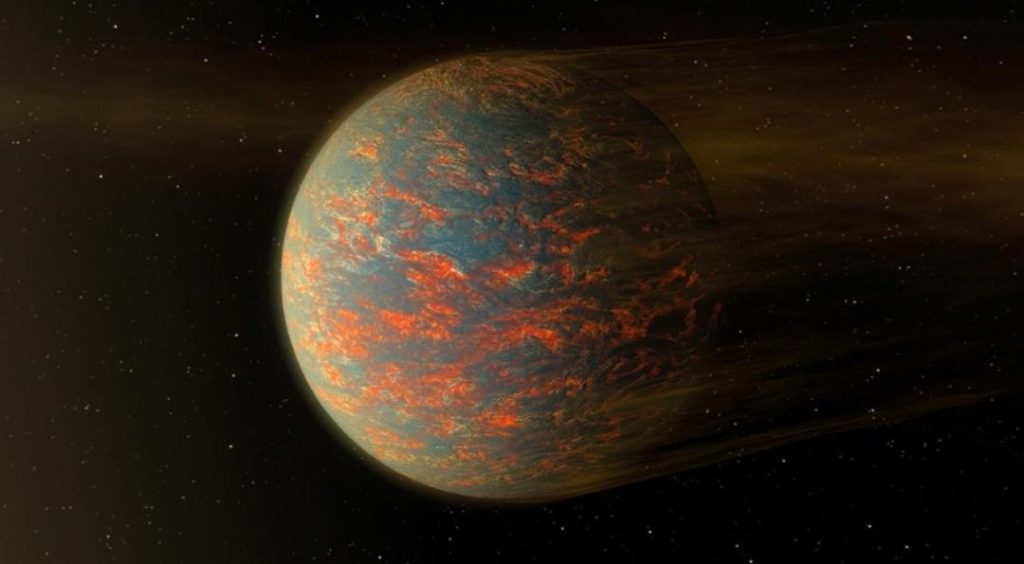
Newly-discovered super-Earth heats up & freezes every 300 days
In a fascinating discovery, scientists have found a new “super-Earth” orbiting a Sun-like star just 20 light-years from our planet. What makes this new planet truly remarkable is its unique orbit, which takes it from scorching hot temperatures to freezing cold ones every 300 days. This extraordinary climate pattern is unlike anything we’ve seen before, and it has left scientists eager to learn more about this mysterious world.
A super-Earth is a planet that is larger than our own Earth but smaller than the gas giants like Neptune and Uranus. This newly discovered super-Earth, which has been given the designation LHS 1140b, fits perfectly into this category. It orbits its host star, a small, cool star called LHS 1140, in an oval shape that takes it from the scorching heat of the star’s surface to the freezing cold of space.
The incredible discovery was made by a team of scientists using the MEarth-South telescope at the Las Cumbres Observatory in Chile. The MEarth-South telescope is designed to detect small, cool stars like LHS 1140, which are often overlooked by other telescopes. The team used the telescope to monitor the star for several years, searching for signs of a planet orbiting it.
After analyzing the data, the team discovered that LHS 1140b was indeed orbiting its host star. But what was truly remarkable was the planet’s unique orbit. As it orbits the star, it experiences extreme heat for the first part of its year, with temperatures reaching as high as 3,900 degrees Fahrenheit (2,148 degrees Celsius). This is hot enough to melt metal, and it’s no wonder that the planet’s surface is thought to be a scorching hot, inhospitable world.
But as LHS 1140b continues its journey around the star, it begins to move away from the star’s surface, and the temperature starts to drop. Eventually, the planet reaches a point where it is as far away from the star as it gets, and the temperature plummets to a chilly -400 degrees Fahrenheit (-240 degrees Celsius). This is cold enough to freeze even the most hardy of materials, and it’s likely that the planet’s surface is a frozen, barren wasteland.
This incredible temperature fluctuation occurs every 300 days, making LHS 1140b a truly unique world. It’s a planet that is unlike anything we’ve seen before, and scientists are eager to learn more about it. By studying LHS 1140b, scientists hope to gain a better understanding of how planets form and evolve, and what conditions are necessary for life to exist.
The discovery of LHS 1140b is a significant one, as it provides us with a unique opportunity to study a planet that is similar to our own, but with some key differences. While our own planet is a terrestrial world with a stable climate, LHS 1140b is a super-Earth with a wildly fluctuating temperature. This difference could provide scientists with valuable insights into the nature of climate and the conditions necessary for life to exist.
The discovery of LHS 1140b also highlights the importance of continued exploration and research into the universe. By studying this new planet, scientists are able to gain a better understanding of the workings of the universe, and what conditions are necessary for life to exist. This knowledge could ultimately help us in our search for extraterrestrial life, and could even provide us with a better understanding of our own planet and its place in the universe.
In conclusion, the discovery of LHS 1140b is a significant one, and it provides us with a unique opportunity to study a planet that is similar to our own, but with some key differences. By studying this new planet, scientists are able to gain a better understanding of the workings of the universe, and what conditions are necessary for life to exist. This knowledge could ultimately help us in our search for extraterrestrial life, and could even provide us with a better understanding of our own planet and its place in the universe.
Source:






